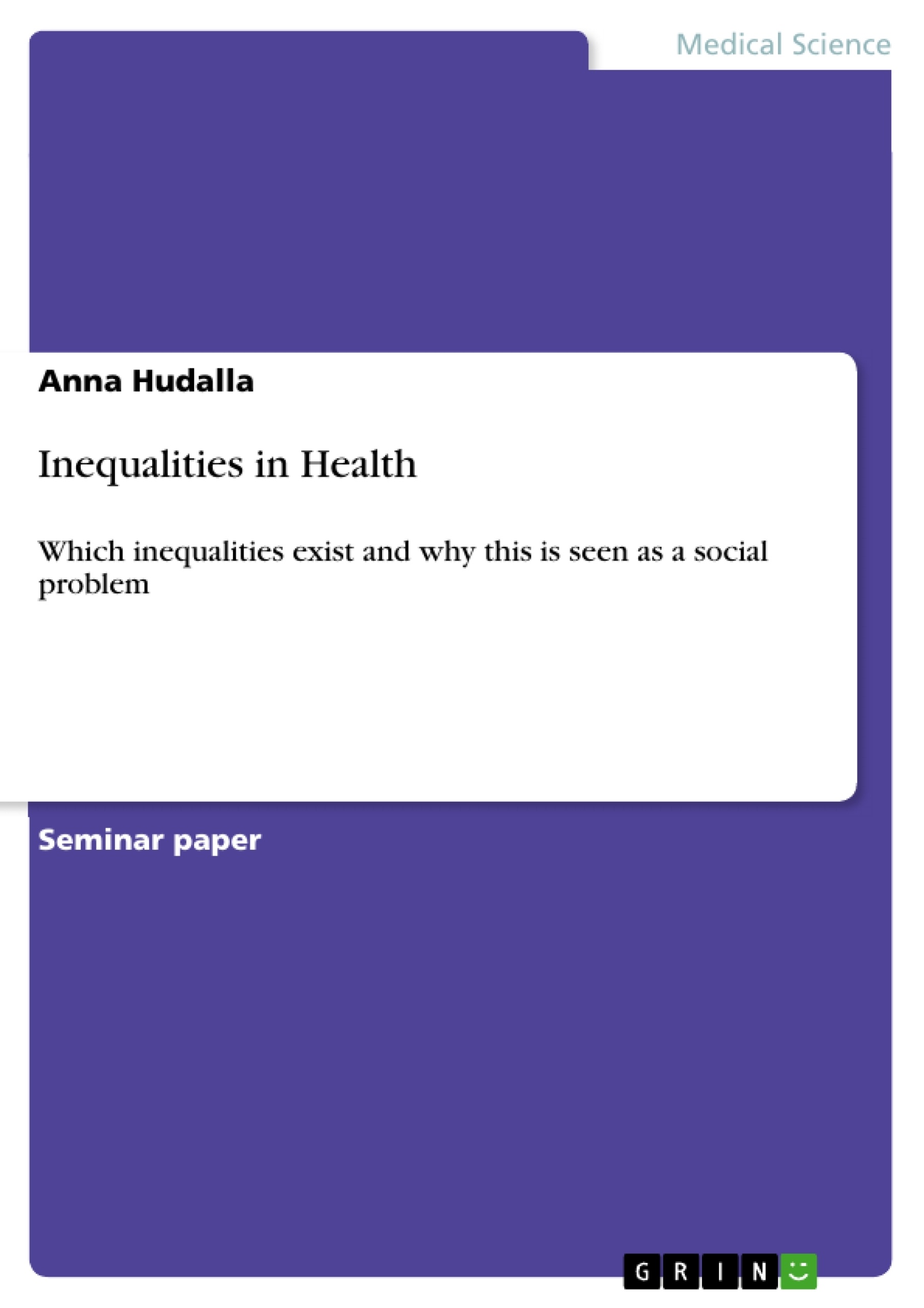This essay is about inequities in health and to what extent they are seen as a social problem. In the first part the measurements for “inequalities” and “health” are clarified. Applying these measurements, the second part highlights currently existing inequalities in health in the UK today. The last part of the essay assesses the question why inequalities steam from social differences and what makes them problematic.
Inhaltsverzeichnis (Table of Contents)
- Abstract
- How to assess Inequalities in Health
- Concept of Measuring Health
- Concept of Inequalities
- Concept of Social Class
- Existing Inequalities
- Life Expectancy
- Infant Mortality
- Life Satisfaction
- Conclusion
- Inequalities as a Social Problem
Zielsetzung und Themenschwerpunkte (Objectives and Key Themes)
This essay aims to explore the existence of health inequalities and the extent to which they are perceived as a social problem. It begins by defining and clarifying the concepts of "inequalities" and "health," including the methods for measuring them. The essay then focuses on identifying current health inequalities in the UK. Finally, it delves into the reasons behind these inequalities, examining their connection to social differences and exploring why they are considered problematic. The key themes explored in this essay include:- Measuring and understanding health inequalities
- The concept of social class as a measure of inequality
- Analyzing existing health inequalities in the UK
- Exploring the social origins of health disparities
- Assessing the societal implications of health inequalities
Zusammenfassung der Kapitel (Chapter Summaries)
The first chapter of the essay introduces the concept of health inequalities and the challenges of measuring them. It examines how our understanding of health has evolved over time and how it varies across different societal groups. The chapter also explores different methods of measuring health, emphasizing mortality rates as a key indicator. The second chapter delves into the concept of inequalities and how they differ from mere differences. The essay highlights the Black report's distinction between inequalities, which are considered socially constructed and undesirable, and differences, which are viewed as natural variations. The third chapter examines the concept of social class as a measure of inequality. It explains the long-standing tradition of using occupational class or status as a measure of social-economic disparities in Britain. The chapter delves into the reasons for using occupational status as a primary indicator, acknowledging its limitations and its strong relationship to other factors like housing, education, and income. The fourth chapter explores the existing inequalities in health within the UK, specifically in terms of life expectancy, infant mortality, and life satisfaction. These sections provide data-driven insights into how these health indicators are affected by social class.Schlüsselwörter (Keywords)
This essay focuses on the key concepts of health inequalities, social class, and their impact on health outcomes in the UK. It explores the measurement of health disparities and examines the social and economic factors that contribute to these inequalities. The essay emphasizes the need to understand and address the social determinants of health, recognizing the crucial role of social class in shaping health experiences.
Excerpt out of 15 pages
- scroll top
- Quote paper
- Anna Hudalla (Author), 2011, Inequalities in Health, Munich, GRIN Verlag, https://www.grin.com/document/264756
Look inside the ebook



